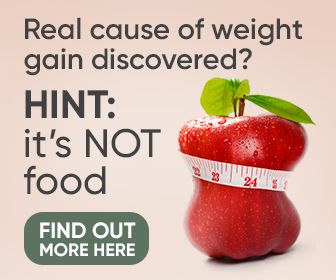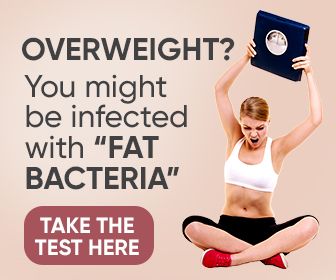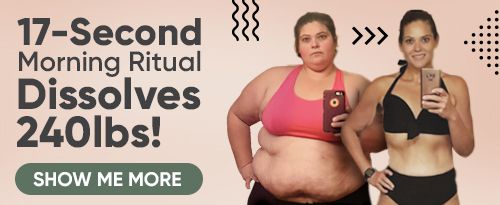Cravings are not real hunger. They are intense urges for specific foods, usually high in sugar, fat, or refined carbohydrates. Unlike hunger, which builds gradually and can be satisfied with a balanced meal, cravings come on suddenly and demand a very specific taste, texture, or food type.
These urges are driven by biological, psychological, and environmental factors. Blood sugar fluctuations, stress, sleep deprivation, and hormonal imbalances all increase cravings, making them harder to resist. The foods people crave most—chocolate, chips, pastries, fast food—are designed to trigger dopamine, the brain’s reward chemical. The more often this cycle repeats, the stronger cravings become.
Cravings also form through habit. Reaching for sweets after dinner or snacking late at night trains the brain to expect food at those times. The body learns patterns, and breaking them requires a different approach than willpower alone. Instead of fighting cravings, understanding their cause and making small, strategic adjustments can weaken them over time.
Here’s how to stop cravings before they start and make healthier choices feel automatic.
1. Balance Blood Sugar to Avoid Sudden Cravings
Cravings often start with a blood sugar spike and crash. When a meal is high in refined carbs or sugar, glucose levels rise quickly, giving a short burst of energy. But soon after, insulin floods the bloodstream, dropping blood sugar too fast. This triggers intense hunger signals, making the body crave another fast energy source—usually more sugar or processed carbs.
Keeping blood sugar steady throughout the day prevents this rollercoaster effect. A high-protein breakfast, such as eggs with avocado or Greek yogurt with nuts, has been shown to reduce sugar cravings by up to 60% throughout the day. Pairing carbohydrates with protein and fat also helps slow digestion and prevents spikes. Instead of eating fruit alone, adding nut butter or cheese slows sugar absorption and keeps energy levels stable.
Apple cider vinegar has also been proven to reduce blood sugar spikes by 20–30% when taken before meals. Drinking one tablespoon in water before eating starchy foods can make cravings less frequent and less intense.
2. Increase Protein Intake to Control Hunger Hormones
Protein plays a critical role in regulating appetite and reducing cravings. Unlike carbs, which digest quickly, protein slows digestion and stabilizes blood sugar. It also increases dopamine, the brain’s reward chemical, in a way that naturally reduces the urge for sugar and processed foods.
Research shows that people who eat at least 30 grams of protein per meal experience fewer cravings and eat fewer empty-calorie snacks throughout the day. High-protein breakfasts reduce late-night sugar cravings and emotional eating.
Good protein sources include chicken, fish, tofu, eggs, and legumes. For snacks, Greek yogurt, almonds, or cottage cheese help keep hunger in check better than processed foods. Replacing carb-based snacks with protein-rich ones significantly reduces cravings over time.
3. Improve Sleep to Reduce Late-Night Cravings
Lack of sleep disrupts hunger hormones, making cravings stronger and harder to resist. Ghrelin, the hormone that increases hunger, rises when sleep is cut short, while leptin, the hormone that signals fullness, drops. This imbalance leads to stronger cravings for high-calorie, high-carb foods, especially in the evening.
Getting 7–9 hours of sleep per night naturally lowers cravings. Studies show that well-rested people consume fewer processed foods and make better dietary choices without even trying.
To improve sleep quality, going to bed at the same time every night helps regulate hunger hormones. Reducing screen exposure an hour before bed prevents blue light from delaying melatonin, the sleep hormone. Avoiding caffeine after 2 PM improves deep sleep, reducing next-day cravings.
4. Manage Stress to Stop Emotional Eating
Cortisol, the body’s stress hormone, triggers cravings for sugar and processed foods. This is not just psychological—when cortisol levels rise, the body searches for quick energy and comfort, leading to stress eating. People under chronic stress consume up to 40% more high-carb, high-fat foods than when relaxed.
Exercise is one of the most effective ways to lower cortisol and reduce cravings. Strength training, walking, or yoga have been shown to lower stress hormone levels, making cravings less intense. Even a 10-minute walk can immediately reduce cortisol and help stop emotional eating.
Replacing stress eating with alternative dopamine triggers is also effective. Activities like listening to music, taking cold showers, or even chewing gum provide a dopamine boost without relying on food. A study found that just five minutes of deep breathing can lower cortisol and reduce cravings.
5. Adjust Your Environment to Make Better Choices Easier
People eat what is most convenient and visible. If processed snacks are within reach, they will be eaten. Research shows that keeping junk food out of sight reduces consumption by up to 30%.
Keeping healthy snacks prepped and visible makes better choices effortless. Having pre-cut vegetables, nuts, or high-protein options ready to grab prevents impulsive junk food choices. Storing processed foods in inconvenient places makes it less likely they will be eaten out of habit.
Changing food accessibility removes the need for willpower by making healthier options the default.
6. Allow Small Indulgences to Avoid Rebound Cravings
Strict food rules backfire. People who completely eliminate sugar or processed foods often end up bingeing later because extreme restriction increases cravings. A more effective approach is planned flexibility—allowing occasional indulgences in controlled portions.
A small, planned treat—like a square of dark chocolate or a portion-controlled dessert—prevents the feeling of deprivation that leads to overeating. Using the “two-bite rule”—taking two mindful bites and stopping—satisfies cravings without overconsumption.
Instead of labeling foods as “good” or “bad,” moderation and balance create a healthier relationship with food.
Cravings Follow a Pattern—Fix the Pattern, and Cravings Weaken
Cravings follow a system driven by blood sugar swings, stress, poor sleep, and habitual patterns. Instead of trying to resist them, adjusting the system that creates them makes cravings weaker and less frequent over time.
Keeping blood sugar stable, increasing protein intake, improving sleep, managing stress, and reshaping the food environment all work together to reduce cravings naturally. These changes make better choices easier and more automatic, without needing constant self-control.
When the body is no longer in a state of nutrient imbalances, stress triggers, and blood sugar crashes, cravings lose their power. Fixing the underlying causes makes better eating habits feel natural, not forced.








